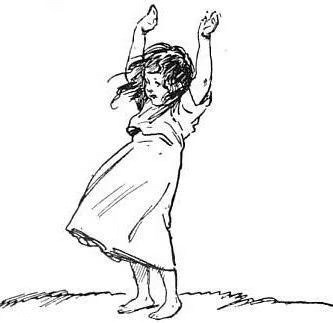Amanda! Summary Class 10 English First Flight Chapter 6
| Table of contents |

|
| About the Poet |

|
| Key Points of the Poem |

|
| Detailed Summary |

|
| Theme/Message |

|
| Literary Devices |

|
| Difficult Words |

|
About the Poet
Robin McMaugh Klein, born on February 28, 1936, in Kempsey, Australia, is known as a children's author who infused depth into her poems. Despite starting with odd jobs like being a tea lady and nurse, she found her passion for writing early, publishing her first poem at sixteen. Winning the Literature Board Grant in 1989 spurred her to publish around twenty books, including the acclaimed "Amanda." Her works, such as "Hating Alison Ashley" and "Came Back to Show you I Could Fly," received awards and were adapted into movies, achieving bestseller status in Australia

Key Points of the Poem
- The poem depicts Amanda enduring her mother's constant criticism for various faults like nail-biting and laziness.
- Amanda daydreams of escaping into the serene life of a mermaid or the solitary existence of Rapunzel.
- Her mother's reprimands extend to chores, diet, and behavior, leaving Amanda feeling suffocated.
- She imagines freedom as an orphan, longing for the simplicity of footprints in the sand.
- However, the mother's persistent nagging eventually crushes Amanda's spirit, leaving her unable to find solace even in her dreams
Detailed Summary
Don’t bite your nails, Amanda !
Don’t hunch your shoulders, Amanda !
Stop that slouching and sit up straight,
Amanda !
In this stanza, Amanda is receiving criticism, likely from her parents, for habits like nail-biting and slouching with her shoulders bent. The instructions are delivered in a stern manner, lacking any warmth or friendliness, which leaves Amanda feeling confused and disconnected. The tone of the instructions feels harsh and authoritative, making it difficult for Amanda to understand their purpose or significance. This lack of empathy and understanding exacerbates Amanda's sense of frustration and alienation, as she struggles to comprehend why her behavior is being criticized so harshly.
There is a languid, emerald sea,
where the sole inhabitant is me-
a mermaid, drifting blissfully.

Amanda uses her imagination as an escape point from day to day commands of her parents. She says that there is a calm, emerald sea whose only inhabitant is me. She finds peace in her own created world where there are no restrains. She imagines herself to be a joyful mermaid sailing without any confines alongside soft waves of the green sea.
Did you finish your homework, Amanda ?
Did you tidy your room, Amanda ?
I thought I told you to clean your shoes,
Amanda!
Now, Amanda is being questioned about completing her homework, tidying her room, and cleaning her shoes. This series of instructions represents a change from the previous stanza. Her name is called out again, this time with an exclamation mark, indicating that her parents are becoming increasingly frustrated and agitated. The shift in tone suggests that their patience is wearing thin, and they are troubled by Amanda's apparent neglect of her responsibilities. This escalation in their tone and manner of addressing Amanda reflects their growing frustration and perhaps a sense of urgency for her to comply with their demands.
I am an orphan, roaming the street.
I Pattern soft dust with my hushed, bare feet.
The silence is golden, the freedom is sweet.'
Don’t eat the chocolate, Amanda !
Remember your acne, Amanda !
Will you please look at me when I’m speaking to you
Amanda !

Amanda is again lost into her own world. After getting a fresh list of instructions from her parents, she wishes to be away from this daily routine life. Amanda perceives herself as an orphan roaming on the streets, moving aimlessly without any purpose. She seems happy as she draws patterns using her bare feet. Amanda is stopped by her parents from eating a chocolate as previously it caused her ache. Amanda is still lost in her own thoughts and doesn’t care enough to look up to her scolding parents. This carelessness further angers the parents and they ask for her attention when she is being scolded.
I am Rapunzel, I have not a care;
life in a tower is tranquil and rare;
I’ll certainly never let down my bright hair!
Amanda remains lost in her reverie, envisioning herself as Rapunzel, the golden-haired princess isolated in her castle. She romanticizes Rapunzel's life, perceiving it as serene and enchanting. However, Amanda hesitates to let down her hair, symbolizing her reluctance to engage with others. She desires solitude, believing that the presence of another person would impose expectations and constraints on her behavior. Amanda yearns for freedom and happiness, longing to live on her own terms without the influence or interference of others.
Stop that sulking at once, Amanda !
You’re always so moody, Amanda !
Anyone would think that I nagged at you,
Amanda !
Despite her parents' continual instructions, Amanda remains absorbed in her own fantasies. Her parents interpret her lack of response as annoyance, which worries them. They fear that Amanda's behavior reflects poorly on them, causing them to feel anxious about their reputation in society. They are concerned about how others will perceive them if their child consistently appears to be in a bad mood. This preoccupation with societal judgment adds to their distress and exacerbates their attempts to control Amanda's behavior.
Theme/Message
Theme
The poem "Amanda" highlights the conflict between control and freedom, showing Amanda's desire for independence against her mother's strictness. It also reflects the challenges of parenting and the balance between guidance and a child's autonomy.
Message
The poem stresses the importance of balancing guidance and freedom in parenting. Overbearing control can lead to frustration and hinder emotional growth while nurturing and understanding foster healthy development. Parents should encourage independence while offering support and love, allowing children to grow and express their individuality.
Literary Devices
- Rhyme scheme - aaba ccc .
- Anaphora – repetition of a word at the beginning of sentences.
‘Don’t bite your nails, Amanda!
Don’t hunch your shoulders, Amanda!’
‘Did you finish your homework, Amanda?
Did you tidy your room, Amanda?’ - Metaphor– (Indirect comparison)
Emerald sea – the green colour of sea is indirectly compared to an emerald
Mermaid – she compares herself to the imaginary water being
Orphan – she likens herself to an orphan living by herself
Silence is golden – the value of silence is indirectly compared to the value of gold
Freedom is sweet – the taste of freedom is as pleasant as taste of sweet things - Alliteration– (repetition of same sound in proximity)
Stop that slouching and sit up straight – ‘s’ sound is repeated
Stop that sulking – ‘s’ sound is repeated - Repetition– (repeating words for emphasis)
The use of the word ‘Amanda’ - Allusion – referring to some other well known person or thing to draw connections
Rapunzel – She refers to the confined fairy tale character Rapunzel who lived in a tower cut off from the rest of the world. It was only her hair which enabled the witch to climb up to the tower. - Imagery – describing things or creating images with the help of words
‘There is a languid, emerald sea,… drifting blissfully’
‘I pattern soft dust with my hushed, bare feet’
Difficult Words
- Hunch: to bend
- Slouching: sitting in a lazy way
- Languid: relaxed
- Emerald: a green color
- Inhabitant:a resident
- Drifting: carried slowly by the water
- Blissfully: happily
- Orphan: a child whose parents are dead
- Hushed: a quiet and still place
- Acne: pimples
- Rapunzel: a girl in the fairy tale by the Brothers Grimm
- Tranquil: calm, quiet
- Rare: Uncommon
|
61 videos|812 docs|69 tests
|
FAQs on Amanda! Summary Class 10 English First Flight Chapter 6
| 1. Who is the poet of the poem "Amanda!" and what is the main focus of the poem? |  |
| 2. What are the key themes addressed in the poem "Amanda!"? |  |
| 3. Can you explain the use of literary devices in "Amanda!"? |  |
| 4. What message does the poem "Amanda!" convey about childhood? |  |
| 5. What are some difficult words found in the poem "Amanda!" and their meanings? |  |
















